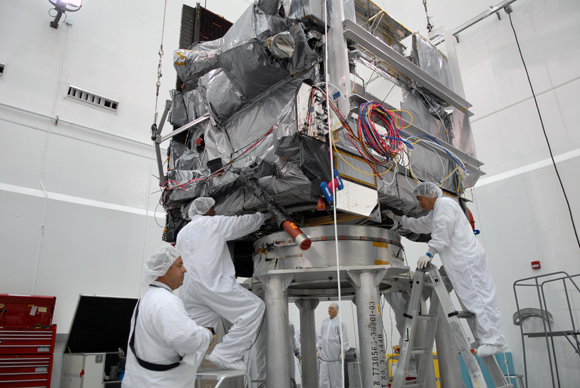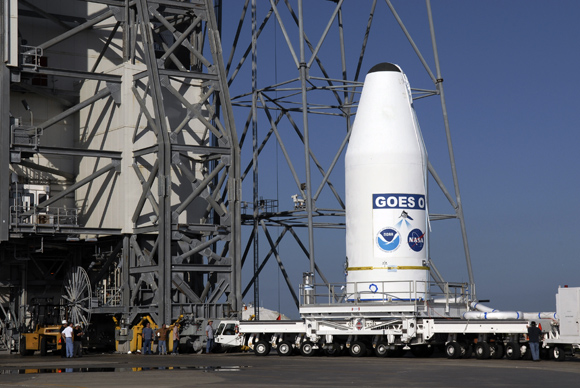GOES-14 Shows First Image
From 22,336 miles in space, NOAA’s newest Geostationary Operational Environmental Satellite – GOES-14 – took its first full-disc visible image on July 27 at 2 p.m. EDT. GOES-14 joins three other operational NOAA GOES spacecraft that help the agency’s forecasters track life-threatening weather and solar activity that can impact the satellite-based electronics and communications industry.

Technicians at the Astrotech payload processing facility in Titusville, Fla. check the alignment of the GOES-O satellite onto a special stand for loading of its oxidizer and hydrazine propellants. (Credit: NASA)

GOES-O arrives at Launch Complex 37 at Cape Canaveral Air Force Station in Florida, where it will be lifted into the mobile service tower. (Credit: NASA)
June 27, 2009 — GOES-O lifts off at 6:51 p.m. (EDT) atop the United Launch Alliance Delta IV expendable launch vehicle. On July 7, GOES-O was placed in its final orbit and renamed GOES-14. Click to watch video. (Credit: NASA)

GOES-14 took its first full-disc visible image on July 27 at 2 p.m. (EDT). After five more months of tests, GOES-14 will be placed in orbital storage mode, ready for activation if any of NOAA’s operational GOES spacecraft experiences trouble. The GOES satellites continuously provide observations of 60 percent of the Earth including the continental United States, providing weather monitoring and forecast operations as well as a continuous and reliable stream of environmental information and severe weather warnings.
+ Download High Resolution (Credit: NOAA/NASA)
